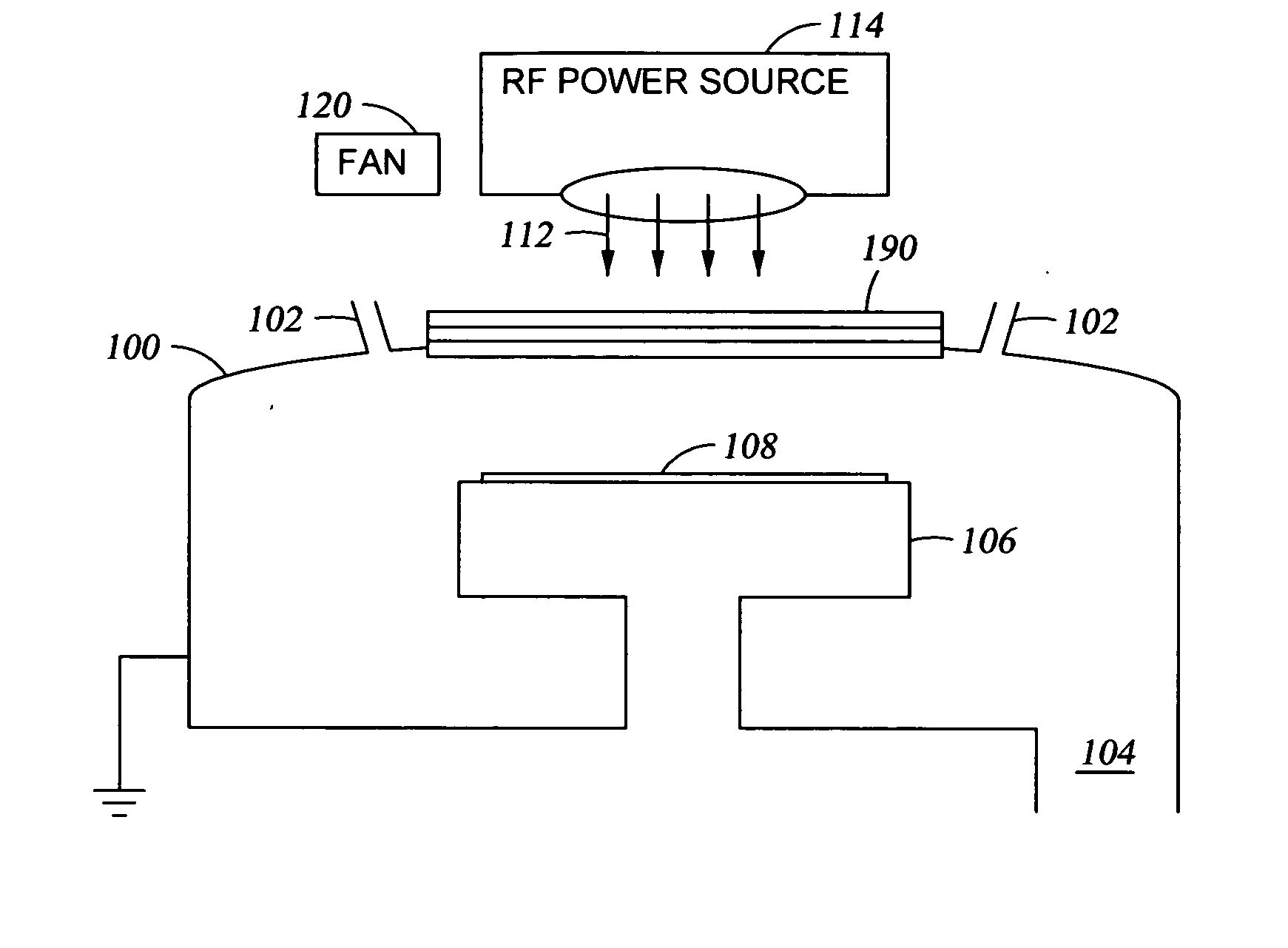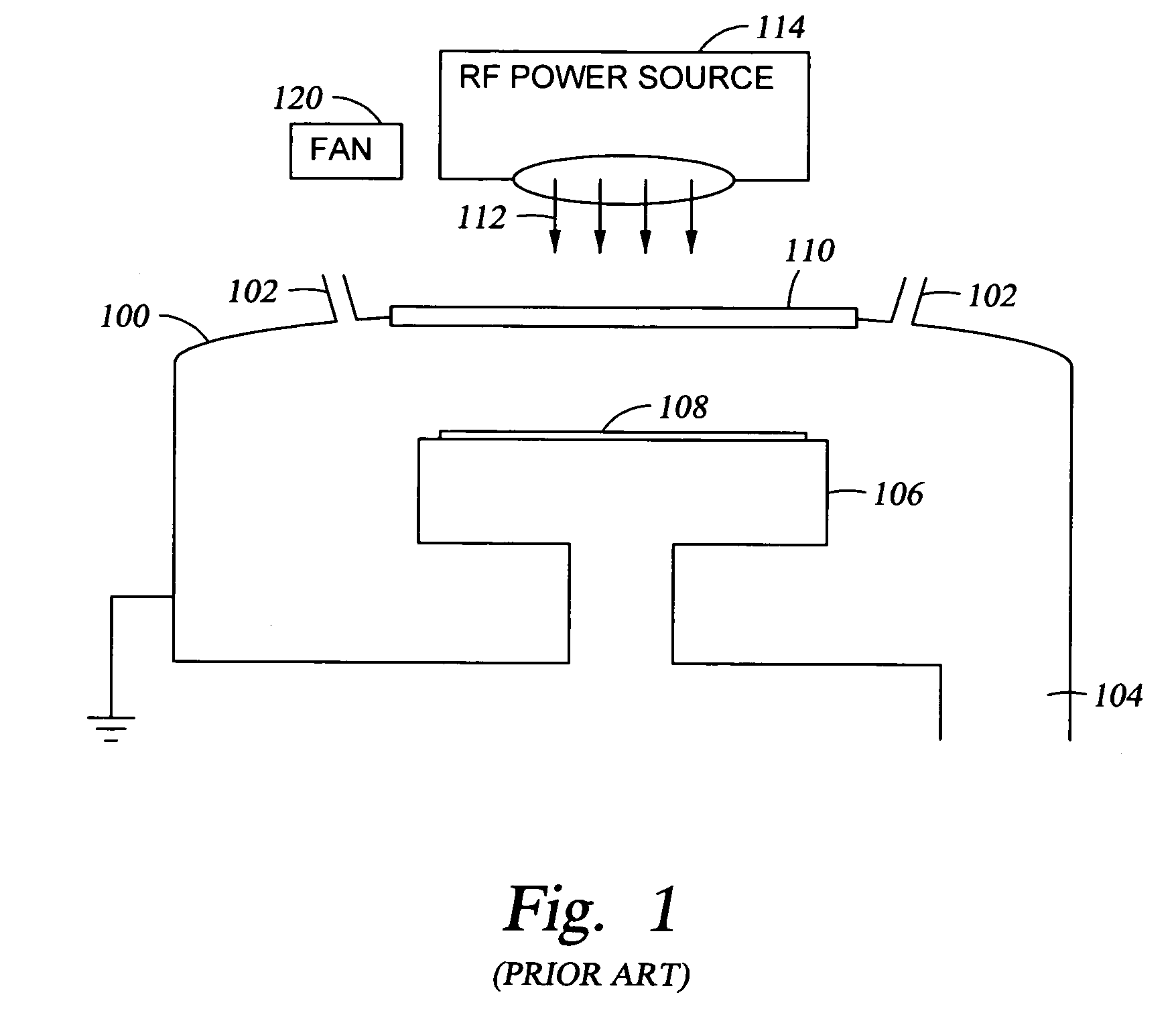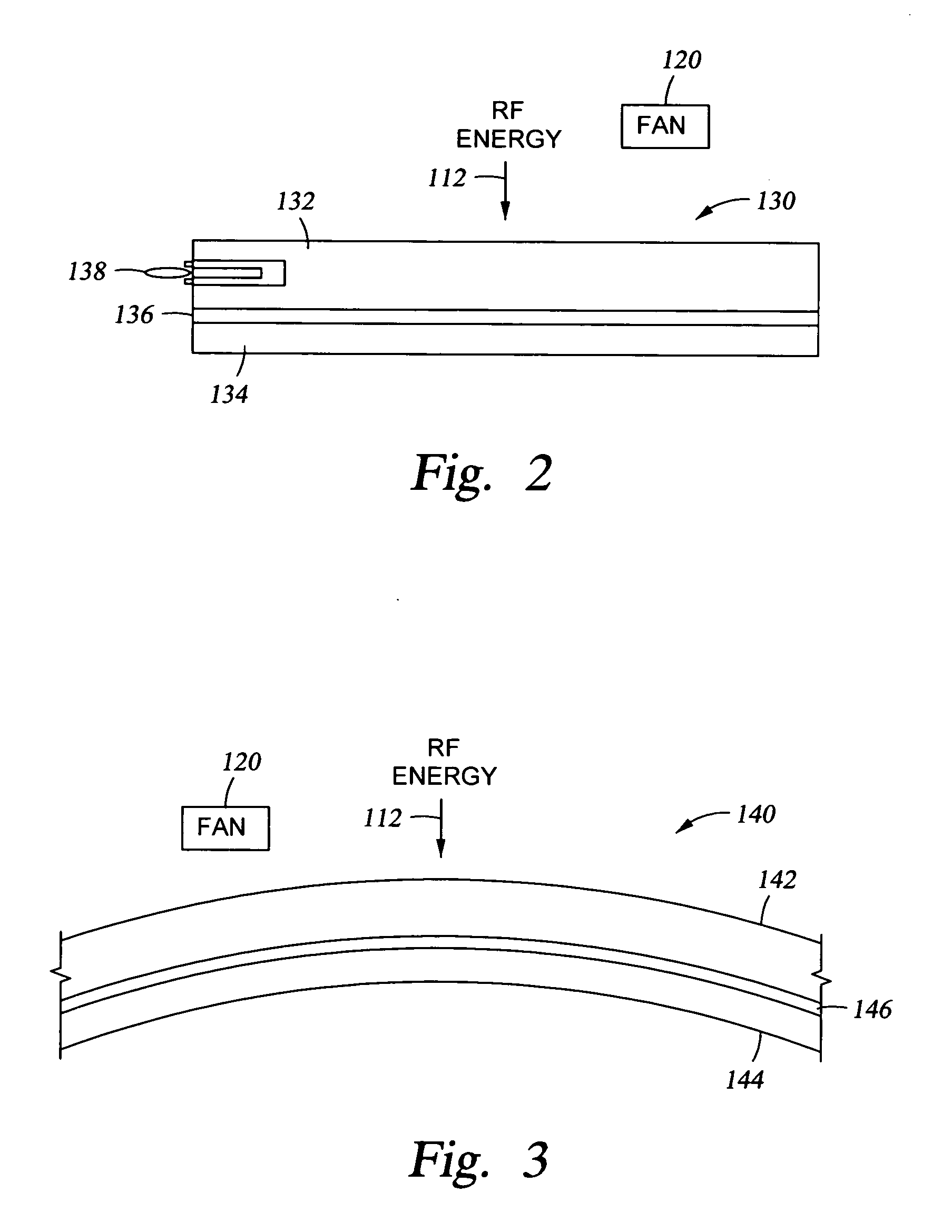Bonded multi-layer RF window
a multi-layer dielectric window and bonding technology, applied in waveguide devices, paper/cardboard containers, transportation and packaging, etc., can solve the problems of reducing the reliability and affecting the efficiency of a single process, and the temperature of the plasma to drift from the optimal, so as to achieve adequate plasma-resistant properties and facilitate thermal conductivity
- Summary
- Abstract
- Description
- Claims
- Application Information
AI Technical Summary
Benefits of technology
Problems solved by technology
Method used
Image
Examples
Embodiment Construction
[0029] With reference now to the drawings, FIG. 1 is a simplified cross-sectional side view of a conventional RF plasma reaction chamber presently used for typical processes in the fabrication of integrated circuits in a silicon wafer. The reaction chamber 100 typically includes one or more process gas inlets 102, an exhaust port 104 connected to a vacuum pumping system, and a chuck 106 for supporting a wafer 108 to be processed. The gas inlets 102 may be in the form of a showerhead distributing the process gas over a wide area in opposition to the chuck 106. In one type of an RF plasma reaction chamber, an RF window 110 is disposed in opposition to the chuck 108 to transmit RF energy 112 generated by an RF power source 114, typically operating in the low megahertz range, to the process gases inside the reaction chamber 100. In a typical arrangement, the RF window 110 may be cooled from the outside of the reaction chamber 100. For example, a fan 120 circulates air across the back of...
PUM
| Property | Measurement | Unit |
|---|---|---|
| glass forming temperature | aaaaa | aaaaa |
| glass forming temperature | aaaaa | aaaaa |
| glass forming temperature | aaaaa | aaaaa |
Abstract
Description
Claims
Application Information
 Login to View More
Login to View More - R&D
- Intellectual Property
- Life Sciences
- Materials
- Tech Scout
- Unparalleled Data Quality
- Higher Quality Content
- 60% Fewer Hallucinations
Browse by: Latest US Patents, China's latest patents, Technical Efficacy Thesaurus, Application Domain, Technology Topic, Popular Technical Reports.
© 2025 PatSnap. All rights reserved.Legal|Privacy policy|Modern Slavery Act Transparency Statement|Sitemap|About US| Contact US: help@patsnap.com



